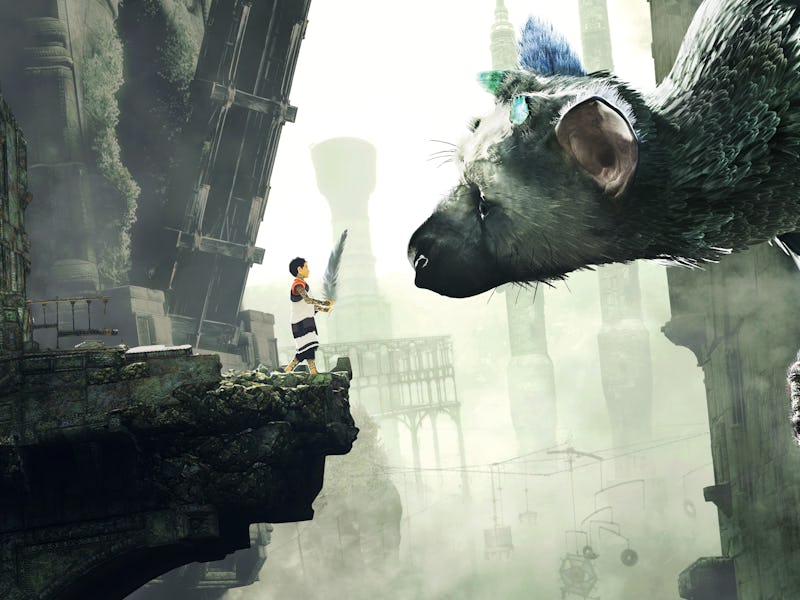You Only Have a Week to Get The Last Guardian Free on PS5
A boy and his griffin.

Many of the best PlayStation games available are free as part of the PS Plus Collection. PS5 owners who subscribe to the service can claim twenty amazing games, including Uncharted 4, God of Wår (2018), and Bloodborne.
But on May 9, that all goes away. Beyond the flashy tentpole titles, one of the best games to grab is the cult classic The Last Guardian.
As the developers of Ico and Shadow of the Colossus, Team Ico earned a reputation for creating singular gaming experiences that other developers constantly seek to emulate to this day. The studio’s final game, The Last Guardian, sought to push the emotional themes the studio had always investigated to its extreme. To do this the game centers on the relationship between a young boy and an enormous creature named Trico.
Trico is friend-shaped.
Trico is the heart of The Last Guardian, mechanically and narratively. Building off of the cooperative relationship in Ico, Trico becomes the ideal game companion. As an adorable dog-like creature, who wouldn't want to help them out? The Last Guardian tasks players with navigating through a ruined castle full of puzzles that require cooperation between the boy and Trico. Though unlike most modern companion characters what makes Trico unique is that they aren’t just a tool.
At the start of the journey, the boy (and the player by extension) has very little control over Trico’s actions. Trico is a victim of abuse and this makes them hesitant to trust the boy. Trico, despite their size, is a timid creature. Stained glass eyes littered throughout the game world are vestiges of Trico’s abuse, as they clearly recoil in fear at the symbol of their oppression. The boy must destroy them in order to progress. Likewise, the boy can offer comfort after the battle by petting Trico and removing spears that have pierced the beast.
Narratively this may not be too different from the relationship between Joel and Ellie in The Last of Us (which itself took inspiration from Ico) but what differentiates the games and makes The Last Guardian feel special is that the mechanics do as much — if not more — of the heavy lifting. The player and Trico must commit to a mutual relationship of trust.
You can let Trico wander freely through the world, revealing new paths on their own rather than at your order. Eventually, the two are able to build a relationship and only then can you command Trico to jump on ledges, head in certain directions, and even attack. But you have to spend time in-game caring for Trico in order to get this ability.
Not knowing if Trico will choose to save you makes the bond between them and the player special.
Trico becomes a character that the player must actually trust to make choices to support you based on this building relationship. There come times in The Last Guardian when the boy is captured by enemies, and they hold Trico off by wielding the stained-glass eyes. The player is helpless, as the boy is not able to fight back against the enemy. But if you spent the time to care for Trico and build your bond then they will make a leap of faith, crashing into the enemy and breaking the stained-glass eyes themself in order to save you like you have saved them so many times before.
At the end of The Last of Us, the player feels love for Joel and Ellie because the game’s story of constant trauma bonding is made specifically to elicit that result. But it’s all done through cutscenes that fall into known patterns of storytelling that elicit human emotion on the part of the viewer. It is a voyeuristic viewing of the relationship between Joel and Ellie, not Ellie and the player.
The Last Guardian’s necessitation of trust built through play between Trico and the player is not a simulation, it is real. You earned Trico’s trust by choosing to care for them and trust them in return. That is how you complete The Last Guardian, by giving up the idea that you can control this creature. Trico is the most real NPC in a game because of this, and it is what makes The Last Guardian so worth playing.